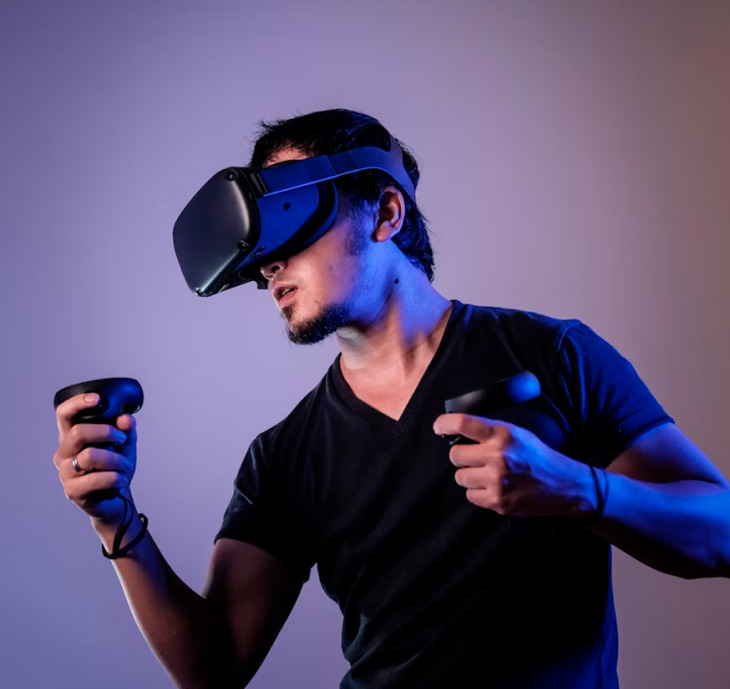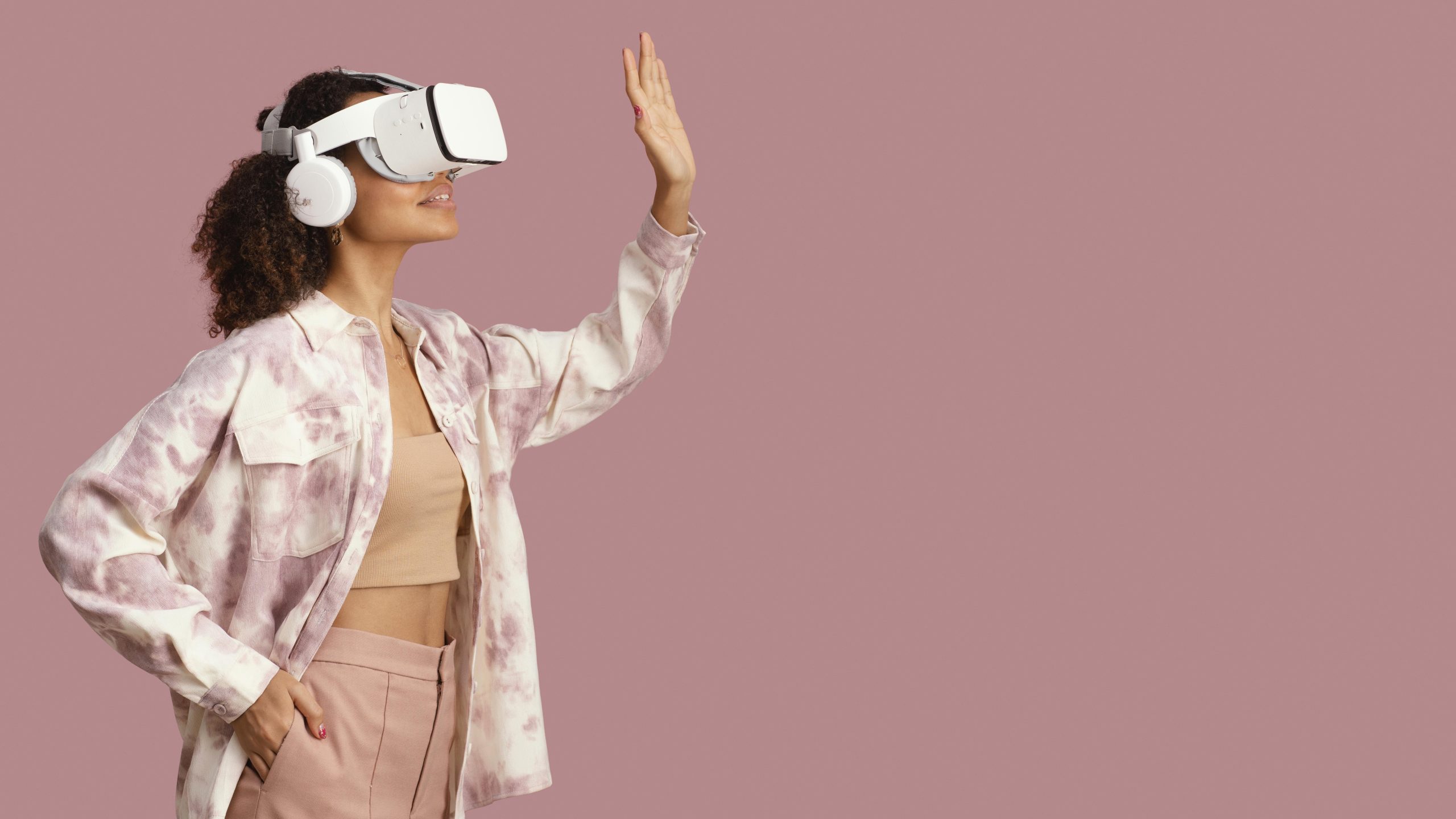Mixed Reality (MR) is a captivating and transformative technology that blurs the boundaries between the physical and digital realms. In this comprehensive exploration, we will delve into the intriguing world of Mixed Reality, unraveling its core principles, understanding its unique capabilities, exploring its applications across various domains, and appreciating its potential to reshape how we interact with our environment.
Understanding Mixed Reality (MR)
Mixed Reality (MR) is a dynamic and immersive technology that converges elements of both the physical world and the digital world, creating an augmented environment where digital objects and information seamlessly coexist with real-world surroundings. It represents a continuum that bridges the gap between Virtual Reality (VR) and Augmented Reality (AR), offering users an enriched and interactive experience that transcends the limitations of either technology alone.
Key characteristics of Mixed Reality (MR):
- Coexistence: MR allows digital content and physical elements to coexist within the same space. Users perceive digital objects as if they were part of their physical environment.
- Interaction: MR encourages user interaction with digital objects, enabling individuals to manipulate, respond to, and engage with virtual elements in real time.
- Realism: MR strives to create a convincing blend of the real and virtual, with digital objects integrating seamlessly into the physical world, including factors like lighting, shadows, and spatial relationships.
- Spatial Awareness: MR systems are equipped with sensors and cameras that enable them to understand the user’s physical surroundings. This spatial awareness enhances the sense of immersion and realism.
Significance of Mixed Reality (MR)
Mixed Reality (MR) holds immense significance in multiple domains, shaping the way we interact with information, objects, and technology:
- Enhanced Experiences: MR offers immersive and interactive experiences that captivate users’ attention and imagination in various fields, including entertainment, education, and professional applications.
- Digital Transformation: MR is at the forefront of digital transformation across industries such as healthcare, architecture, manufacturing, and automotive, facilitating innovative ways of working and problem-solving.
- Spatial Computing: MR is a pioneer in spatial computing, where digital elements are seamlessly integrated into physical spaces. This integration unlocks novel possibilities for how we interact with information and technology.
- Remote Collaboration: MR facilitates remote collaboration by enabling users to share and interact with digital content within a shared physical space, transcending geographical constraints. This is particularly valuable in fields that require teamwork and expertise sharing.
- Training and Simulation: MR is a powerful tool for training and simulations, offering safe and realistic environments for learning, skill development, and decision-making. It prepares individuals for real-world scenarios through immersive experiences.
Applications of Mixed Reality (MR)
The versatility of Mixed Reality (MR) technology translates into a multitude of applications across diverse industries:
- Gaming and Entertainment: MR enhances gaming and entertainment experiences by merging digital and physical elements. It enables users to interact with digital characters and objects in their real-world surroundings.
- Education and Training: MR redefines education and training by offering immersive simulations, virtual laboratories, and interactive learning experiences. Students can explore complex concepts and historical events in lifelike environments.
- Healthcare: MR plays a pivotal role in medical training, surgery planning, and patient education. Surgeons can practice procedures in virtual environments, and patients can visualize their conditions through interactive MR visuals.
- Architecture and Design: Architects and designers benefit from MR’s ability to create 3D models, virtual walkthroughs, and realistic visualizations of architectural designs. Clients can explore and approve designs virtually.
- Automotive: MR aids in vehicle design, engineering, and manufacturing. Engineers can collaborate remotely in MR environments, and automotive manufacturers use MR for design reviews and prototyping.
- Military and Defense: MR is essential for military training, mission planning, and simulations. Soldiers can rehearse tactical maneuvers and decision-making in realistic virtual scenarios.
- Real Estate: MR assists real estate professionals by providing virtual property tours and immersive experiences for clients interested in buying or renting properties.
Implementing Mixed Reality (MR)
The implementation of Mixed Reality (MR) experiences involves several key steps and considerations:
- Hardware: MR experiences require compatible hardware devices, such as MR headsets equipped with sensors, cameras, and displays.
- Content Creation: MR experiences depend on the creation of digital content, including 3D models, interactive applications, simulations, and immersive narratives.
- Development Platforms: Developers use MR development platforms and tools to design, build, test, and deploy MR applications.
- Integration: MR solutions may require integration with existing systems, software, and infrastructure to ensure seamless functionality.
- User Training: End users may need training on how to use MR devices and applications effectively, ensuring a smooth user experience.
- Content Distribution: MR content can be distributed through app stores, online platforms, or enterprise networks, depending on the target audience and purpose.
The future of Mixed Reality (MR)
The future of Mixed Reality (MR) holds boundless promise as the technology continues to evolve and find new applications. Key considerations for the future include:
- Technological Advancements: Ongoing advancements in MR hardware, software, and rendering capabilities will elevate the realism and immersion of MR experiences.
- Accessibility: Efforts to make MR more accessible and affordable will democratize its use, enabling a wider range of individuals and industries to benefit from immersive experiences.
- Interoperability: Improved interoperability between MR devices and platforms will facilitate cross-platform collaboration and content sharing.
- Privacy and Security: Addressing privacy and security concerns in MR environments will become increasingly important as these technologies become more integrated into our daily lives.
- Industry-Specific Solutions: Tailored MR solutions will continue to emerge, addressing the unique needs of various industries, from healthcare and education to entertainment and manufacturing.
Mixed Reality (MR) represents a remarkable fusion of the digital and physical worlds, offering immersive experiences that span entertainment, education, industry, and beyond. As MR technologies continue to advance, they are poised to play an increasingly prominent role in shaping the future of digital interactions and experiences. With limitless possibilities on the horizon, MR stands as a transformative force in the ongoing evolution of our digital landscape.






